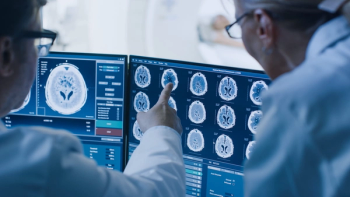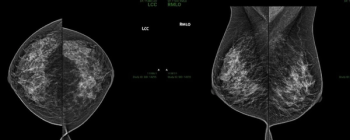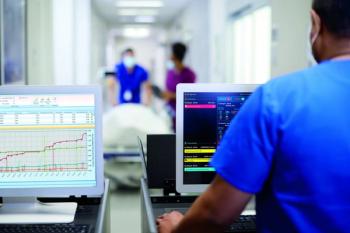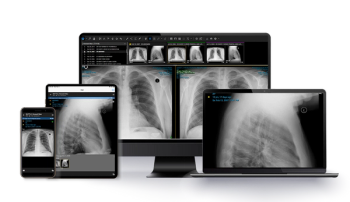
Offering four key software-as-a-service features, the cloud-based enterprise imaging suite reportedly offers enhanced security and storage and facilitates streamlined radiology workflows.

Offering four key software-as-a-service features, the cloud-based enterprise imaging suite reportedly offers enhanced security and storage and facilitates streamlined radiology workflows.

The newly launched Progressive Loading feature, available through RamSoft’s OmegaAI software, reportedly offers radiologist rapid uploading of images that is faster than on-site networks and other cloud-based systems regardless of the network radiologists are using.

New additions to the Philips Capsule Surveillance software include improved integration with health information technology (HIT) systems and enhanced visibility of patient data across remote devices.

Offering a potential antidote to health-care silos that can hamper and delay care, the Enterprise Imaging and Informatics Suite may revamp image sharing and communication between providers.

HIMSS 2016 uncovers major facelift for the imaging IoT.

HIMSS 2016 helped refine the outlook of the time to market for deep learning in medical imaging.

Experts that have developed enterprise imaging strategies talked about their process at HIMSS 2015.

7 reasons why it might be time to switch from PACS to VNA.

A program presented at HIMSS 2015 highlights the value of decision support for appropriateness in imaging.

Jonathan Berlin, MD, clinical associate professor of radiology at the University of Chicago, discusses the common areas of communication break down between radiologists and ordering physicians, and technology's role in the solution.

Siemens and Dell are partnering to provide a cloud-based image archiving and sharing solution for radiology, which they are highlighting at HIMSS this week in Las Vegas.

ETIAM Corp. is introducing its turnkey system for communicating and managing images beyond the enterprise.

Dicom Systems recently introduced the ArcStore DICOM Archive VNA Version 2.0.

Carestream will showcase its expanded Vue for Cloud Services with mobile imaging data access from its Vue Motion viewer, and higher levels of encryption and security through the Intel Xeon processor E7 family.

Application developer Integrated Document Solutions (IDS) will unveil at HIMSS 2012 the latest versions of its smartphone apps aimed at unifying work lists and improving accessibility.

In the boom leading up to sequencing of the human genome, genetics and legal experts debated the ownership of the data contained within the double helix. Now, as the U.S. readies for a surge into healthcare IT, a similar debate has broken out over EMRs. The outcome could be critical to making the best use of the huge amount of electronic medical information that the Obama Administration’s stimulus funding will create in the next few years.

Time is running out on Medicare, said economist Alan Greenspan in a keynote address to a capacity crowd at HIMSS09. Nearly 7000 attendees of the conference heard the former Fed Chairman explain how political expediency going back more than two decades ago led to the present-day inadequately funded federal healthcare program. Greenspan tagged healthcare IT as a possible means for getting out of this trouble.

The debate over “meaningful use” has begun. At stake is nothing less than the success of President Obama’s initiative to turn paper into electronic medical records.

There’s no more natural way to convey information than speech and arguably no more difficult interface or a computer to capture. Agfa has come up with a couple new twists to help. Viztek takes a swing at tighter integration between PACS and EMRs, while IT specialists include first responders in the chain of medical communications and refine ways for providers to keep on top of their financials.

The makers of electronic medical records have never been happier. For the first time, their technologies are glitzier than MRs and CTs. The federal government is gearing up to reimburse the use of HIT products with an entitlement program that will award fees similar to those given the users of high tech medical scanners. And the result could be an enormous boon to the adoption and use of healthcare IT. But as vendors get ready to slide new servers and archives into place, are they also unwittingly laying the plans for a trap door that will lead medical practice down a path no one would consciously choose?

The road to profit goes through a tiny burg called accuracy, which is sometimes harder to find than it should be. Vendors on the HIMSS09 exhibit floor offered their own kinds of medical GPS, some using off-the-shelf technologies spun up with a proprietary brand of software, others offering home brewed data handling techniques.

RIS and PACS vendors saw it coming a long time ago, a need to make data repositories work with IT the systems that drive workflow. The hybridization of RIS and PACS, preceded by interfaces that allowed the transfer of data between and among systems by different vendors, blazed a trail toward interoperability. This trail has now fanning out to super highway status to accommodate the spread of companies seeking to provide answers to IT questions that must be answered if the Obama initiative is to improve the efficiency of U.S. healthcare.

The HIMSS 09 exhibit floor opened Sunday as thousands of IT enthusiasts descended on McCormick Place in Chicago. Mammoth exhibit halls packed in November with imaging equipment played host to myriad information technologies, some focused on the core of healthcare IT – switching, translating and archiving packets of data; others addressing the consequences of IT adoption.

One of the healthcare industry’s most innovative meetings took place in San Diego in February: the Health Information and Management Systems Society annual meeting and exhibition. This year’s HIMSS meeting attracted 25,740 attendees, including staff for 895 exhibitors. More healthcare chief information, technology, and operations officers as well as senior IT managers assemble at this conference than any other gathering in the world.

Attendees at the Healthcare Information and Management Systems Society meeting had four days to experience a Regional Health Information Organization in action at the Integrating the Healthcare Enterprise Interoperability Showcase. By improving the state of system integration, the IHE aims to make information readily available wherever it is needed and to remove barriers to optimal patient care.

An insider’s view of the world’s largest integrated delivery network can be had for the price of admission this week at the Healthcare Information and Management Systems Society meeting in San Diego. The Department of Defense exhibit at HIMSS showcases the healthcare IT programs that consolidate and manage an IDN comprising 70 hospitals, 800 clinics, 60,000 medical professionals, and more than nine million patients.

Improving informed consent is a $4.3 billion challenge that could be met if more facilities used their digital systems to automate the process, a pair of presenters said Tuesday at the Healthcare Information and Management Systems Society meeting in San Diego.

Three months after Hurricane Katrina devastated its city, the radiology department at the Louisiana State University Health Sciences Center, School of Medicine at New Orleans passed along valuable lessons about PACS disaster recovery during a Hot Topic presentation Tuesday at the RSNA meeting.

As computer-aided detection continues to make inroads into virtual colonoscopy territory, studies presented Tuesday at the RSNA meeting highlighted its potential for spotting polyps.

Health information technology is not just about wired physicians or better treatment for patients, said Dr. David Brailer, the first National Coordinator for Health Information Technology, at the HIMSS meeting’s closing session. It’s about treating the healthcare industry itself.